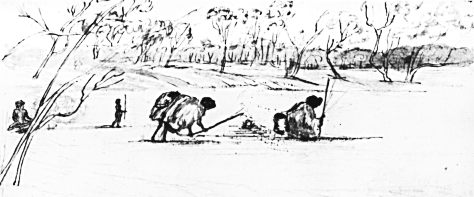The Gerritsen-Pascoe Theory of Aboriginal Agriculture - a Scholarly Rebuttal
In 2008, Rupert Gerritsen (Ref 1) published his wonderfully detailed, but somewhat controversial report on Aboriginal agriculture. It was controversial given its claims that Australia’s Aborigines were not just hunter gatherers, but were ‘agriculturalists’, a claim not supported by many, if any other scholars. Mr Pascoe relies heavily on Gerritsen’s evidence in developing the ‘story’ that becomes Dark Emu, published some 6 years later in 2014, and he openly admits his indebtedness to Gerritsen’s published work (“Rupert should have got all the credit for Dark Emu,”- Pascoe in Ref 2).
Rather than expecting the reader to rely on our amateur opinions and research alone, we have been able to find a scholar to provide a rebuttal to Gerritsen’s thesis on the presence of pre-colonial Aboriginal agriculture (and therefore a rebuttal of Mr Pascoe’s ‘agriculture’ theory as well).
Ian Gilligan, of the School of Archaeology and Anthropology, The Australian National University, presented a paper, ‘AGRICULTURE IN ABORIGINAL AUSTRALIA: WHY NOT?’, at the 19th INDO - PACIFIC PREHISTORY ASSOCIATION CONGRESS, 29th November - 5th December, 2009., one year after Gerritsen published his thesis.
Gilligan, examining the evidence of Gerritsen finds it unconvincing and writes : “Gerritsen documents three purported cases of “agriculture” prior to the colonial era in Australia :
1. Exploitation of domesticated yam (Dioscorea hastifolia) on the west coast of Western Australia, by the Nhanda and northern Amangu groups [See our Dutch Blog post of June 28 2019];
2. The sowing (or, more specifically, the broadcast sowing) and “harvesting” of the seeds of wild cereal grasses, particularly native millets (Panicum decompositum), by the Paakkantyi group along the Darling River basin in western New South Wales, extending to other groups in the “Corners” region centred on the Lake Eyre drainage area in northeastern South Australia; and
3. The propagation (intentional or unintentional, by digging) of wild Murnong roots (Microseris lanceolata), together with the use of fish and eel traps, by groups in southwestern Victoria.”
Gilligan then concludes: “Each of Gerritsen’s three cases of indigenous agriculture in Australia is problematical however…” with “…deliberate propagation of the domesticated yam by the Nhanda, — resulted from the adoption of Dutch castaways (along with the yam) by local Aboriginal groups on the west coast during the Seventeenth Century, and clearly does not constitute a de-nove emergence of ‘agriculture’ among the indigenous population. The …broadcast “sowing” of wild millet and other grain seeds in the Corners region, probably provides the closest approximation to truly indigenous, de-novo “agriculture” in Aboriginal Australia. Nonetheless, this practice lacks the other features that should be present for it to qualify as agriculture. Deliberate dispersal of seeds onto unprepared soil with the knowledge that subsequent growth of the grain will yield food barely qualifies as “sowing”, while the absence of any plant husbandry (nurturing and protecting the crop) is significant. Gerritsen’s third case, the “accidental” or “incidental” propagation of Murnong roots in southwestern Victoria is, as he concedes, somewhat short of “gardening”, or horticulture.”
In summary Gilligan states “Gerritsen concedes that his argument for an indigenous trend towards agriculture in Aboriginal Australia (limited almost entirely to the late Holocene) is based upon “extremely limited” evidence”.
Gilligan’s full paper can be viewed here :
where the reader can see the full analysis and nuances of this argument, which we believe shows that Australian Aborigines were hunter gatherers, despite some faint indications of nascent agriculture.
Details of this nascent agriculture and possible reasons why it did not develop to full agriculture on the Australian continent will be discussed in detail in a future blog.
References
Gerritsen, R., Australia and the Origins of Agriculture, BAR International Series 1874, 2008.
Guilliatt, R., Turning history on its head, The Weekend Australian Magazine May, 25, 2019
Photo Credit: Digging rush bulbs Arnhem Land 1936 - Copyright Museum of Victoria D Thomson Collection; Others Museum NSW Collections.
Gilligan’s map of the locations of possible Aboriginal ‘agriculture’. Hardly inspiring as evidence that the 500-odd Aboriginal tribes were living a settled, agricultural existence in their ‘stone house villages’, tending their ‘vast irrigated estates of grain’ and ‘aquaculture’ systems prior to the British arrival as Mr Pascoe maintains.






